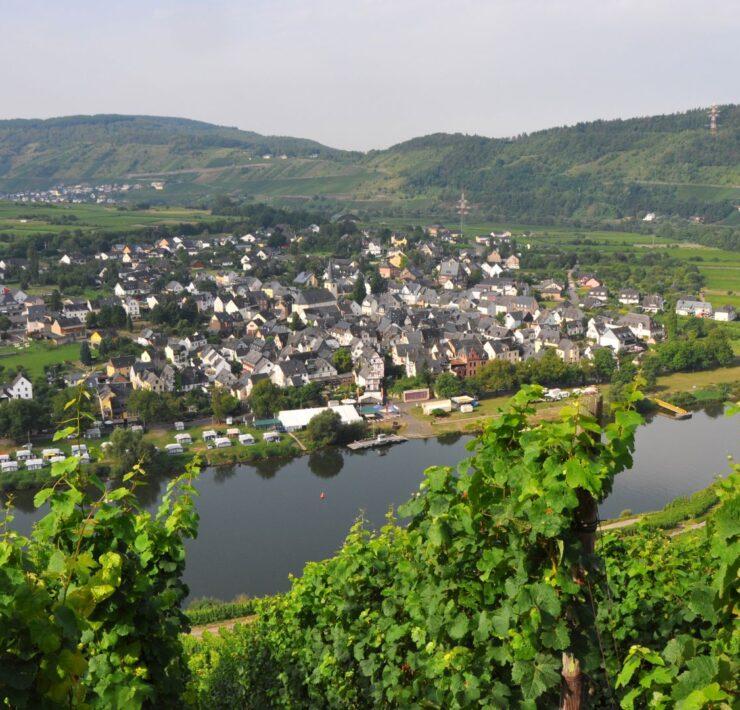“Emerging” typically refers to something that didn’t exist and is now rising to prominence. Think about emerging markets, technologies, industries, or talent. However, many emerging U.S. wine regions have been producing wine for centuries. Texas, for example, was the first state to establish a vineyard in the United States in 1662, while Virginia has been producing wine since the late 1600s. So, what makes them emerging wine regions? The answer lies in the country’s complicated wine history.
U.S. Wine History Summarized
The earliest parts of North America’s wine history come long before the establishment of the United States. Settlers, primarily from Spain, Italy, and Germany, came to North America in the 1500s and 1600s to see vines already growing. These would be later classified as Vitis rotundifolia, Vitis riparia and Vitis lambrusca. The settlers deemed those grapes to be of lower quality than European varieties, eventually bringing their own cuttings to North America.
The next chapter of winemaking in the U.S. was short-lived, as a problematic louse reared its head: phylloxera. Vineyard disease wiped out the first attempts at producing Vitis vinifera wine on American soil. Centuries later, in the late 1800s, Texas and New Mexico scientists realized native rootstocks resist phylloxera. The concept of grafting European vines to those rootstocks ultimately saved the American wine industry.
While things appeared optimistic following the phylloxera epidemic, Prohibition completely altered how and where wine would have success. States had to maneuver through many local, state, and federal laws following the ban on the manufacturing, transporting, selling, possessing, and consuming alcoholic beverages between 1920 and 1933.
Today, all 50 states produce wine in some manner, while some produce it on a world-class level. Below, we look at some of the emerging U.S. wine regions that may have a long winemaking history but are only recently making a name for themselves among consumers.
Virginia
Virginia is among the first states in the U.S. to produce wine. The earliest vine plantings were in the 1600s, but earnest efforts to produce quality wine came later from Thomas Jefferson. Jefferson returned from a trip through Europe and wanted to create a similar quality of wine in Virginia. Unfortunately, that proved very difficult during his lifetime.
Today, the state grows nearly 5,000 acres of vines and dozens of varieties, including vinifera grapes, hybrids, and native varieties. Virginia’s primary grapes include Cabernet Franc and Chardonnay, but also lesser-known varieties like Petit Manseng and Petit Verdot. In fact, Virginia is the second highest-producing region of Petit Manseng after Jurançon in France. However, the state is less inclined to tout a specific grape as its main one.
“Virginia is such a young region. But what we are finding is that it’s [stylistically] mid-way between Europe and the West Coast. Regardless of what we’re growing, our wines tend to land between the two, which has worked for us,” says Annette Boyd, director of the Virginia Wine Board’s marketing office.
The board serves as the primary entity promoting Virginia wine within the state and across the country. Though the board once attempted to declare Viognier as a signature grape, the state’s diversity continues to be what draws winemakers and consumers to visit.
To explore the best of what the state offers, look to the Monticello AVA and producers like Barboursville Vineyards, Blenheim Vineyards, or Early Mountain Vineyards. The AVA, named after Thomas Jefferon’s home, is also home to the state’s most famous and award-winning wines.

New York
New York is another emerging wine region with a history spanning centuries. In the mid-1600s, Dutch settlers, then French settlers, tried to plant European varieties, which failed due to diseases and harsh winters. It wouldn’t be until the 1820s that the first commercial winery would open in the Hudson Valley. After Prohibition, Charles Fournier, famed winemaker of Veuve Cliquot, introduced hybrids to the state. That allowed New York to produce wines with the flavor and concentration of Vitis vinifera while keeping the disease and cold hardiness of native varieties.
In 1953, Dr. Konstantin Frank laid the groundwork for French varieties growing in the state. That would lead to the production of New York’s flagship grape, Riesling, gaining international attention in the 1960s and 1970s.
Today, the state enjoys the strength of that grape but also produces other varieties of equal quality. “We will never stop putting a big flag in the ground here with Riesling; there’s a reason it does so well,” says Kyle Pallischeck, executive director of the Finger Lakes Wine Alliance. “But there’s so much we do well here, like our rosé and sparkling wines. Because of our climate, we can get the right ripeness for sparkling. I think there will be more of a ‘yes and’ conversation going forward.”
Riesling remains the most accessible wine outside New York, exemplified by producers like Wagner Vineyards and Dr. Konstantin Frank Winery. However, producers like Heart and Hands and Glenora Wine Cellars demonstrate other varieties, like Pinot Noir and Chardonnay. However, they can be challenging to find unless ordered directly from the wineries.

Michigan
Michigan is only slightly younger than Virginia and New York with its winemaking history, planting the first vines around 1702. By the 1860s, Michigan was the third highest-producing state, behind California and New York.
During Prohibition, Michigan didn’t shut down entirely like other states. Because of the Detroit River, bootleggers brought beer, wine, and spirits from Canada. Additionally, vines that were initially producing wine started producing Welch’s grape juice. However, as service members from World War II brought home more European influences and a preference for drier wine styles, Michigan was too slow to adapt, hurting the industry. The state also enacted a law in 1972 forcing wineries to pay growers more, further putting them out of business.
Today, the state has more than 200 wineries that are beginning to get countrywide recognition. As a cool climate region, the state has a variety of vinifera, hybrids, and native varieties that allow them to continue to adapt to the times.
“We don’t really have any standards or rules; I like having the freedom to create those things and redirect when we need to. There’s a lot of freedom in being an emerging wine region,” says Emily Docker, executive director of the Michigan Wine Collaborative. “A message we’d like to get outside the state is to let people know we are growing and making world-class cool climate wines like Pinot Blanc and Blaufränkisch. But, we’re also pioneering quality winemaking with hybrid grapes.”
Sparkling wine and cold-hardy grapes like Riesling remain the primary wines leaving the state. Mawby Wines and BOS Wines are examples that ship nationwide.

Texas
Texas plays a significant role in the history of wine in the U.S. The state’s industry began in the 1650s when Spanish missionaries brought European vine cuttings. Unfortunately, Texas wine struggled from that moment until the late 1800s, when the area’s experts saved the American wine industry from being completely wiped out.
Viticulturist and grape breeder Thomas Volney Munson was one of the leading scientists experimenting with grafting American rootstocks to European vines in Texas. American rootstocks were resistant to the deadly phylloxera pest, while European roots had no defense. This process is in use today across the country.
Today, Texas has more than 500 wineries and is the fifth-largest wine-producing state in the country. Their main wine tourism AVA, the Texas Hill Country AVA, is the third largest in the U.S., with over 9 million acres.
Texas Hill Country Wineries is the body that promotes and supports wines in the region. The organization’s primary goal is to “shine a spotlight on the remarkable Texas Hill Country AVA and the extraordinary wines it yields,” says executive director January Wiese, touting the area’s grape assortment. “While most AVAs are known for a specific variety or style, the Texas Hill Country is the land of diversity,” she continues, “which can be particularly exciting as a wide array of wines can be discovered all in one place.”
Wiese adds, “Everything from the world of varieties offered to the adventurous nature of the winemakers and the cultivated experiences at each winery here is exciting right now.”
Examples of producers in the state include Longhorn Cellars and Grape Creek Vineyards, part of Heath Family Brands.

Colorado
Colorado’s wine history is relatively recent compared to other emerging U.S. wine regions on our list. The first wine grape plantings in the state came around 1890. Unfortunately, that only left about 30 years before Prohibition. Even more unfortunate, Colorado enacted Prohibition four years early, in 1916, due to political pressures from the Women’s Christian Temperance Union. The state would not recover for another 30 years after the end of Prohibition in the 1960s.
Today, Colorado continues to explore what works, particularly high-elevation plantings (the highest commercial vineyards in North America). “We are growing grapes as high as 6,800 ft and crafting wines with unique character that reflect our climate, terroir, and microbiological diversity,” says Ben Parsons, winemaker and owner of The Ordinary Fellow in the Grand Valley AVA.
Parsons adds there is a myriad of local activities to complement, making Colorado an all-round vacation destination. “Since enjoying wine is all about exploration, true wine lovers should look out for Colorado wines and book a trip to wine country. Ski in the morning and taste wine in the afternoon. Enjoy world-class mountain biking, rafting and fly fishing. Experience fantastic cuisine from the many James Beard award-winning chefs.”

Diversity Among Emerging U.S. Wine Regions
All of these emerging U.S. wine regions have their unique perspective and sense of place. But one concept links them together: diversity. Across all five states, diversity – in its multiple meanings – is a strength.
It starts with the assortment of grape varieties, from different vinifera varieties to hybrids to native grapes. These regions are very hot (Texas), very cold (Michigan or New York) or can have unpredictable weather (Colorado or Virginia). Given the vintage variation each state experiences, having a variety of grapes to choose from each year is helpful.
Additionally, these states bolster diversity in the traditional sense. The Michigan Wine Collaborative launched Inclusion & Expansion in late 2020 as a commitment to include more representation and advocacy in the state’s wine industry. Elsewhere, the New York Wine and Grape Foundation is planning DEI programs this year in partnership with New York Kitchen.
In other areas, the focus on inclusivity falls more on specific wineries. For example, Commonwealth Crush in Charlottesville, Virginia, just launched a Production Incubator Program designed to “empower historically underrepresented groups in the winemaking community,” according to their Instagram.
Including more people with different perspectives will allow these places to move beyond “emerging” and cement themselves as key players in American winemaking.







